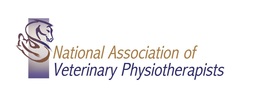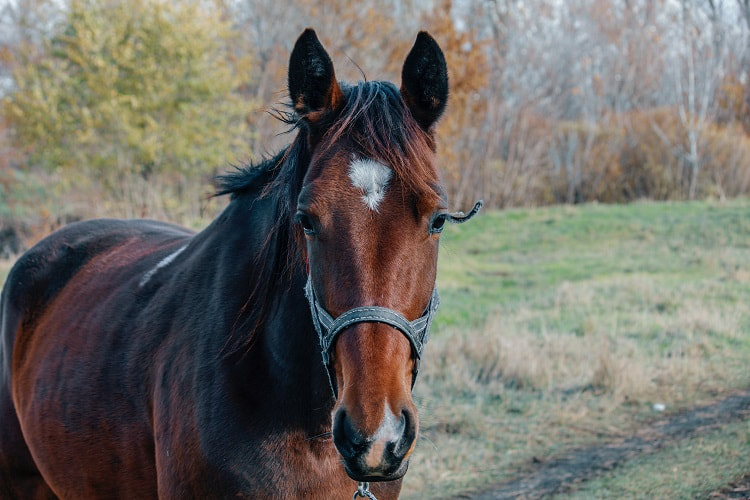|
Osteoarthritis (OA) is extremely common in horses. The cartilage within a joint begins to break down which changes the underlying bone. As this type of arthritis is also called degenerative joint disease or “wear and tear” arthritis, it usually develops relatively slowly and then gets worse over time and can significantly impact the horse’s range of movement. Therefore it is imperative that equine owners not only understand the symptoms of the condition but also what treatment can take place to help ease the pain. Here is our guide to managing your horse with arthritis. Where does OA occur?Whilst any joint in the horse’s body is at risk of being affected by OA, it is usually the hind limb and the hock joint, in particular, that is most commonly affected in equine OA cases. It completely depends on the individual horse as well as other determining factors such as their breed, their discipline and whether they have had any trauma history. What causes arthritis?There are many reasons why a horse may develop arthritis over its lifetime. Here are some of the main reasons:
What are early-onset signs?Even before the visual signs start to show there are several onset signs that horse owners should be conscious of.
DiagnosisUnfortunately, a diagnosis in the early stages of OA is difficult. The changes caused by arthritis within the joint are subtle but can cause enough discomfort to affect movement and in some cases, as explained above, behaviour changes. As lameness does not usually kick in until arthritis has progressed, it is natural and understandable that riders feel their horse is just being “naughty”, misbehaving or being lazy. To avoid making this mistake, a vet physio should be consulted to help identify the problem and assess what is causing the poor performance. The vet physio will undertake a comprehensive assessment and take a detailed history to get the most accurate diagnosis possible. This diagnosis will help you understand the next steps required to managing your horse with arthritis. The horse’s posture should also be examined. Lack of propulsion from the hindquarters which act as the engine of the horse will lead undiagnosed for too long, the compensatory issues become the most noticeable to the rider. This can be back pain and heavy in both or one rein. The farrier will also be able to spot an indicator of arthritis. For example, there may be difficulties when showing the hindlimbs and this can often be an indicator. The horse may either snatch up the hindlimb and hold it in flex before relaxing or they may be reluctant to pick it up at all due to the pain. The diagnosis does also depend on how soon a vet is involved. Where no obvious lameness is seen, owners will often assume there is another reason or explanation for the decline in performance and will get a therapist to come and do a maintenance treatment. Whilst this may initially help with the compensatory effects and allow the horse to resume some normal work if the underlying cause is a joint problem, the results will be limited. When no improvement is to be seen (a guideline is after 3 treatments) and all other observations are considered, the horse should be referred to the vet for further examination. Treatment The successful treatment of OA is not down to one person alone. When managing your horse with arthritis, a collective responsibility falls on the vet, vet physio, trainer, rider and owner alike to ensure the horse remains as comfortable as possible. Veterinary TreatmentVeterinary treatment for OA will depend heavily on the diagnostic results whilst also considering the level of work, age and condition of the horse. The vet has several options available to them to treat OA. Vet Physio SupportBy the time OA is affecting the horse’s work or is a noticeable lameness, it will have been present for some timer, therefore postural compensations will have occurred. Muscles will be sore and altered weight bearing will have taken place. If this is not addressed then other areas will become affected as time goes on, often leading to owners feeling that treatment for the affected joints has not worked - which is not necessarily true. The vet physio will address these muscular issues in order, once veterinary treatment has taken effect. Vets may also ask for Laser therapy to be included in the treatment - this can be very effective provided it is introduced at the right time in the treatment programme. Together with the vet, the vet physio will work on a programme of rehabilitation and maintenance treatments which will ensure the condition can be monitored and the horse kept comfortable. Farrier supportThe farrier may decide to make changes to the showing of the horse to help with the condition. TrainersA different approach may be necessary to the training/ schooling programme. When managing a horse with arthritis, an understanding of what stage the condition is in, and to what extent the joint is compromised (and therefore limiting certain joint movement) is key to helping the owner and the horse. OwnerThey may now be reduced or gone for now but the joint is still compromised. It is not “as good as new” despite the treatment being carried out. It often takes time for an owner to accept that there is a problem, which may limit what they hope to achieve with their horse but with support, good advice and their team working together, it is possible in most cases to have a horse that can return to a level of work that becomes acceptable to both horse and rider. Home ManagementManaging your horse with arthritis will be dependent on the individual horse - there is no prescriptive programme that applies to every horse, although there will be some common factors – which then need to be tweaked to suit the individual. Management will depend on:
Methods of managementTurn OutIdeally, the more they can walk around in the field and keep the joints gently mobilised the better the joints and muscles will be. But , problems will occur if the horse is overweight, plays around in the field or if you cant manage the grass (applicable in most livery yards). Where possible, make sure the field conditions are safe and will not cause more trauma to the joint. For example, playing with other horses or having deep mud in gateways can both be dangerous.
Stable ConditionsIf the horse is stabled ensure they have a good bed that is deep enough to allow the horse to rest when lying down but also to aid in them getting up and down. RidingThe amount of riding will depend on what work you can do following an official diagnosis, the degree of arthritis and the success of the vet and vet physio treatment. Always factor in a warm-up programme, avoid small circles which will involve tight turns. Do not school daily and be aware of the surface you are working on. Intersperse riding with hacking plus 2 rest days per week for a good balance. Pole WorkFor the younger horse with early-onset arthritis / inflamed joins and which has been medicated, poles can be useful to help with the range of joint movement. For the older horse with obvious arthritis changes - sometimes you will see they drag their feet - even if medicated, the joint is likely to be affected to a point where pole work whilst ridden would be contraindicated - for these horses in handwork using pole would be kinder and more helpful. Supplements There are plenty on the market to help with managing your horse with arthritis, some work better than others. Be sure not to overdo supplmentation. Just like humans, overdosing with some supplements or using too many will cause a nutritional imbalance TimeUnderstand the anatomy and the inflammatory process - your vet and vet physio will talk you through this. Medicating the joints works well but the results may not always be as instant as you think. Give it time to work and be prepared to medicate more than once- your vet will advise you on this. Farrier advice Your farrier will be able to help with advice on possible changes in shoeing. Often helpful to the farrier of the horse can be lightly exercised before shoeing- just to help with joint flexibility before shoeing. In some cases, the farrier may lower the height of the tripod to make it easier for the horse to flex the limb when rasping and clenching up. In some severe cases where weight-bearing on the hind limbs is difficult the tripod can be lowered when dealing with the front feet. Osteoarthritis is not a nice condition for your horse to live with, however, especially when caught early, an effective treatment plan can be put in place. There are many ways of managing your horse with arthritis but they depend on working as collaboratively as possible with your vet and vet physio. Every horse is unique and therefore will need a unique tailored recovery plan to suit your horse's needs.
0 Comments
|
AuthorNAVP Archives
June 2024
Categories
All
|
The Association |
Services |
|


 RSS Feed
RSS Feed